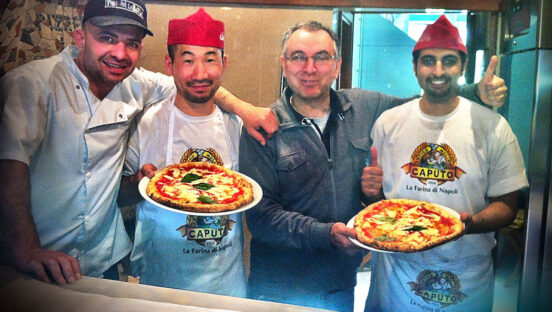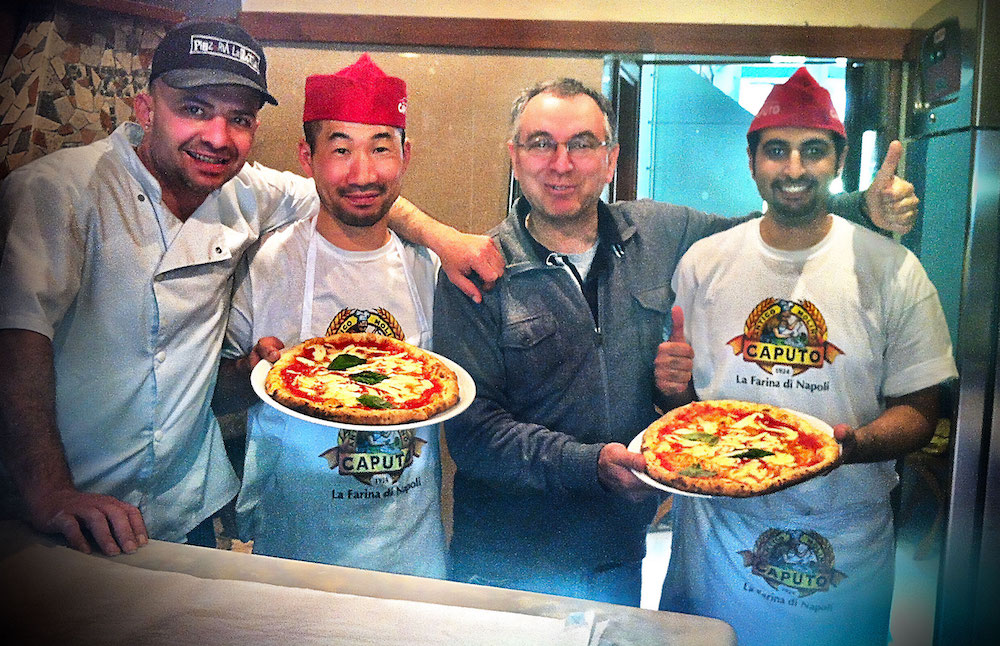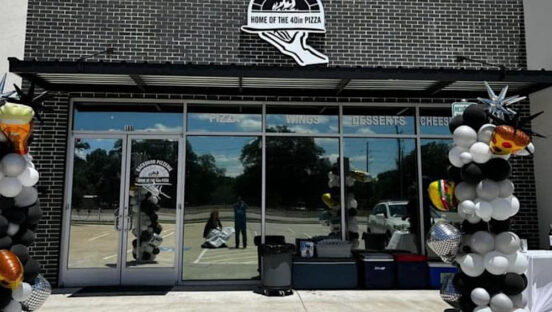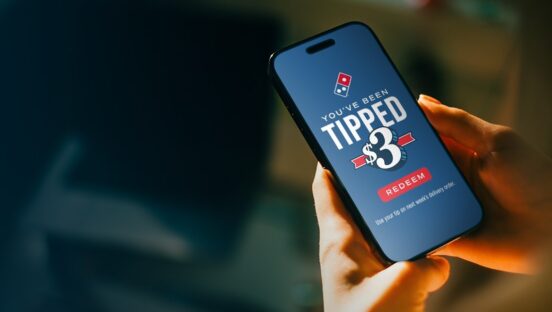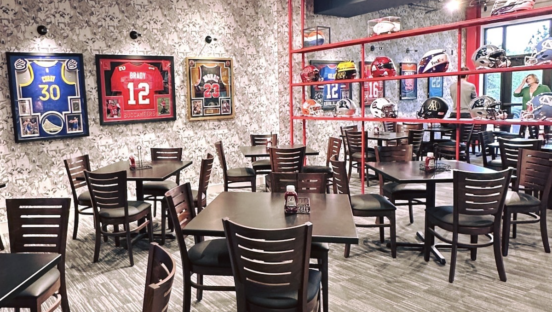By Rick Hynum
Whether you’re running a pizzeria in Sioux City, Iowa, or Kuwait City, Kuwait, certain truths in our business are universal—like the need to listen to your customers.
Yousef Alhussan learned that lesson the hard way. He didn’t listen, the customers stopped showing up, and his first pizza shop, which opened in 2014 in Kuwait, went out of business within a year.
Granted, that wasn’t the only reason for the pizzeria’s closure. He’d also chosen the wrong location, and his rent was too high—all rookie mistakes. In short, Alhussan quickly learned that he had much more to learn.
Related: Despite a massive drop in sales, this pizzeria refuses to move
Things are different now. Today, Alhussan owns Giuseppe’s Pizzeria, located at Camp Arifjan, a U.S. military base south of Kuwait City. And he’s not quite the purist he once was. Giuseppe’s has thrived since 2019, serving pies to a sophisticated and well-traveled crowd of patrons who know what they like. AlHussan gives it to them—in the form of what he terms “Neopolitan” pizza—without any guff. And if that means pizzas topped with pineapples, so be it.
AlHussan, who holds an MBA and formerly worked in Kuwait’s Ministry of Finance as an economic analyst, studied the pizza-making craft with some of the world’s greatest pizzaiolos. We’re talking Neapolitan maestro Enzo Coccia of Pizzaria la Notizia and New York’s own Frank Pinello of Best Pizza in Brooklyn. The business side of pizza, on the other hand, was something he had to figure out largely on his own. Here, he explains how he failed in the pizza biz and how he bounced right back.
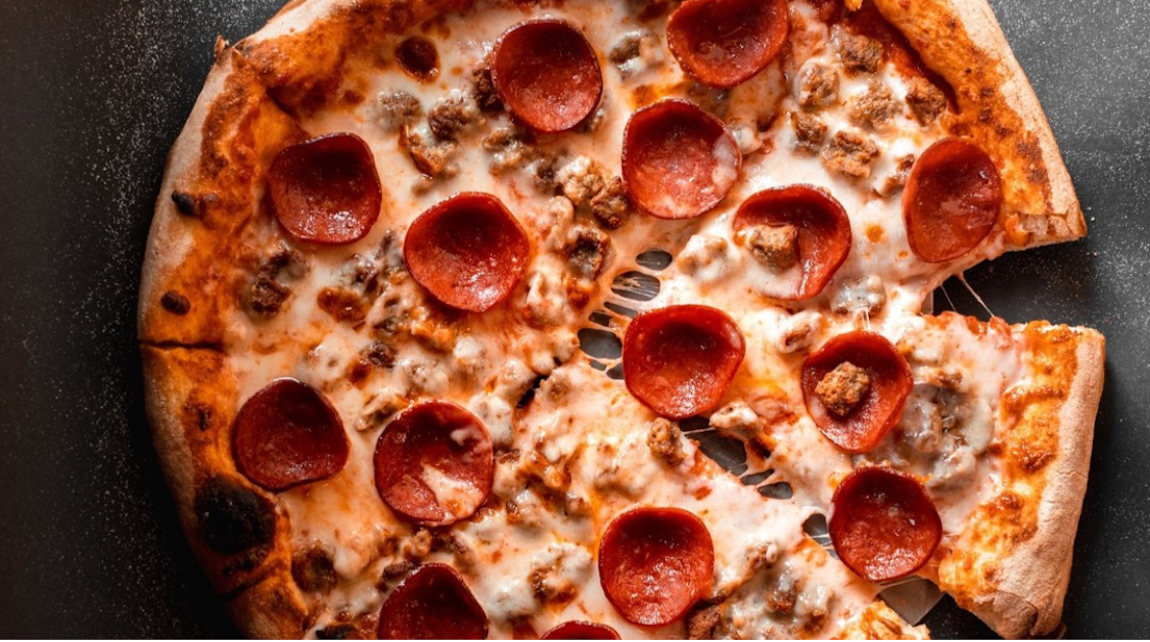
Giuseppe’s Pizzeria / Instagram
Adventures in Italian Pizza Bootcamp
AlHussan discovered the magic of Neapolitan pizza through a documentary film that changed his life. “They explained, in a dramatic way, the history of the craft and mentioned numbers about world market size and all the pizza schools in Naples,” he recalls. “I was shocked indeed by the details and the respect that Neapolitans have for this craft—or maybe I should call it an art. That documentary, with its scenes and soundtrack, just captured my attention in a strong way.”
Prior to that, he’d never had any interest in opening his own restaurant. But he couldn’t get Neapolitan pizza off his mind. “There was a voice in my head telling me that I need to go to Naples and explore this journey,” he says. “So I decided to go. And to go with the mentality of, ‘Let’s try, and if I don’t succeed, it’s OK. This isn’t my field anyway!’”
In 2013, he found himself in what he describes as “an intense pizza boot camp” under Coccia and his right-hand man, Davide Bruno.
Coccia, AlHussan says, is “a man with a very intense presence. Even when he is quiet, you can feel his strong energy. When I went there, I didn’t know who this man was; to me, he was just an Italian cook. I didn’t even know the term ‘pizzaiolo.’ I knew nothing about the Michelin Guide or the Michelin Fork and Spoon! I was a noob.”
Soon, AlHussan came face to face with Bruno, a sort of pizza-making drill sergeant who does always not suffer noobs gladly. They eventually became good friends, AlHussan says, but they didn’t exactly hit it off from the start. “[Bruno] is an aggressive man and totally unfriendly with his students. Rarely will you catch him smiling. Davide can break any student in a couple of hours. He will shout at you, not answer your questions, and you have to follow his instructions step by step without knowing why or go back home.”
For AlHussan, it was tough going: making dough by hand instead of a mixer, nailing down the perfect dough ball, grappling with the science of fermentation, “all of this before making your first pizza and before dealing with the oven, which wasn’t easy at all for a beginner,” he says.
Related: John Arena demonstrates how to make New York-style pizza dough
“At that stage I almost gave up,” he remembers. “It was starting to get really hard, not to mention the pressure from Davide. So, one day I’d had enough and got into it with Davide.”
But, as AlHussan argued with his instructor, a fellow student—a man named Ryu, who hailed from Japan—caught his eye. And AlHussan was struck with a pizza-making epiphany.
“I noticed something that changed my mentality,” AlHussan says. “Ryu was totally in another world. He was in a bubble, working, not even paying attention to us, just perfectly shaping the dough balls one after the other. I was shocked. This man came all the way from Japan, very determined to learn, ignoring all the pressure of learning a new craft under Davide! It’s the birthplace of pizza, and I am there, arguing and thinking of giving up without even trying hard!”
After that, AlHussan says, “I decided to be better than Ryu. I followed Davide’s instructions for a couple of weeks, step by step, and in our last day of training I was as good as Ryu or maybe better! Fast-forward to the last day of training…They gave us our diplomas, and I was more happy than the day I received my MBA certificate.”
But he was still a noob in the business of pizza. He went home and opened his first store, called Pizzeria Volpé, just a few months after returning from Naples. “We stayed open for a year, struggling to keep the doors open. So I had to shut it down in the first quarter of 2015. I failed it.”
Listen and Learn
What went wrong? “It took me a year or more, believe it or not, to be able to answer this question, as I was living in denial. In my mind, I did everything right. The oven was a wood-burning oven from Stefano Ferrara, the tomatoes from Gustarosso, Italian flour, mozzarella di bufala. The pizza was excellent, yet I failed it. I discovered that running a business and cooking are two separate things that are not easy to master simultaneously! And, although I have an MBA, I failed at running the business. The major part of my first failure in the pizza business was choosing a wrong and too expensive location.”
Additionally, he said, “I didn’t listen to anyone. I was taught to make pizza in a certain way, and for me that was the only way. If a customer suggested something, I wouldn’t listen at all. Customers’ suggestions ranged from ‘the dough is soggy, make it crunchy’ to ‘we want pineapples on pizza!’
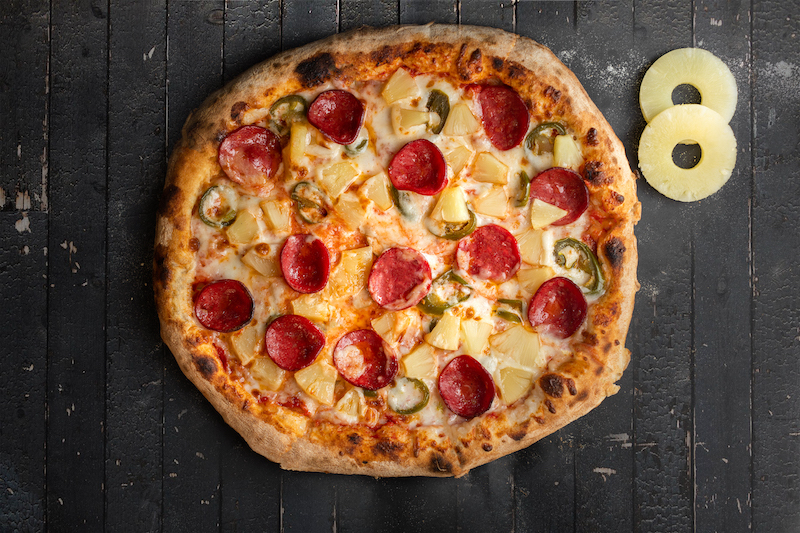
Giuseppe’s Pizzeria
After closing Pizzeria Volpé, AlHussan took a step back, licked his wounds…and decided to try again. He boned up on the F&B business by reading books by Papa Johns founder John Schnatter, Fred de Luca of Subway and S. Truette Cathy of Chick-fil-A. Meanwhile, he kept going back to Naples again and again. He made multiple trips to “observe and to absorb the energy of the city” in 2015, 2017, 2018 and 2019. “It was different this time,” he says. “I had a different eye, a different perspective; due to my humble experience, I could see things differently.”
Related: How a French-trained chef became a great pizza maker
In addition to reconnecting with Coccia and Bruno in Naples, AlHussan toured Caputo’s flour mill, Izzo Forni and Gustarusso. “These tours are very important to understanding where the components of the pizza come from,” he says. “You understand everything literally from scratch, the whole process of the pizza industry, step by step.”
Meanwhile, he also forged a bond with Pinello, who was helping AlHussan’s friend and former customer open an authentic New York-style pizza shop in Kuwait. AlHussan pitched in, too, and, under Pinello’s tutelage, he says, “I learned a lot and got the techniques, such as temperature and what a New York slice should be like, from a master—although not the recipes, I don’t copy recipes!”
In 2019, AlHussan entered the Olimpiadi Vera Pizza Napoletana competition and the Caputo Cup in Italy. In the Caputo Cup, he took 19th place out of more than 160 pizzaiolos in the Neapolitan STG category. “The second category was Pizza Artigianale, and I ranked 30th or 32nd out of 60 to 100 pizzaiolos,” he says. “I can’t really remember as I am not proud of it, due to a small hole in my pizza! The judges loved the product—it was just that small hole!”
Time for a Comeback
When AlHussan opened Giuseppe’s that same year, he’d filled in a lot of the holes in his knowledge of the pizza business. And this time, he listened to his customers before they even became customers. “Before opening, we took a couple of weeks to practice and teach the staff. During that time, I gave all the pizzas I made daily to people for free, like daily pizza parties, and asked them in return to rate the service, speed, pizzas, etc., on printed paper we made for that purpose, with comments and names! I studied every single comment, multiple times. Believe it or not, I still keep these comments in a safe place. So, based on the comments, we changed our product from a Neapolitan pizza to a ‘Neopolitan’ hybrid between New York-style pizza and Naples pizza.”
Opening a pizzeria at Camp Arifjan took him through a lot of hurdles, but the location had a big advantage. “Our customers are well-educated when it comes to food,” AlHussan says. “Believe it or not, some of our customers know Pizzeria la Notizia since they had been deployed in Naples before, which was shocking to me. Most of our customers know what a good pizza is, which is a big advantage! They have had pizzas at the best pizzerias in America, such as Una Pizza Napoletana, Pizzeria Bianco, Di Fara, Lucali, etc. When you operate in a market where customers know the product, this lifts the burden of educating the customers about the product. Our customers know pizza, and we sell pizza!”
Topping his menu, ironically, is a Hawaiian pizza, the very same pie he’d refused to serve at his first shop. “For those who have a strong opinion about it and call themselves pizza purists, I am sure they all know the name Franco Pepe,” AlHussan notes. “Franco tried it once. I believe he did it to prove a point: There are no limits on what can go on a pizza, as long as you are respecting your customers by following the rules of quality, such as proper fermentation, a high-quality flour, high-quality tomatoes and cheese, etc. So I am proud of the Hawaiian because it reflects how I matured!”
Lessons Learned
AlHussan is reluctant to offer advice to other pizza noobs, he says, “because I am still learning myself.” But he’s happy to share all the lessons he has learned thus far:
- Start small. “Test your market with a pop-up or multiple pop ups before establishing a real business,” he says.
- Keep your costs low, including your rent. “Stay away from locations where the costs to acquire a customer is higher than the revenue you generate from that customer.”
- Educate yourself about money. “A pizzeria is a business after all,” he says. “I am 39 and still learning. Soon I will finish my third course with Harvard Business School online in the field of entrepreneurship and innovation. Without business skills, you can’t build a sustainable business that can live for generations.”
- Again, listen to your customers. “They see things from a different angle,” he says, “and they are the boss, not you!”
- Don’t put all your eggs in one basket. Is it always wise to use the profits from your pizzeria to open another one? Not necessarily, AlHussan notes. “The COVID crisis taught me to re-invest our net profit in different sectors other than the F&B sector.”
- Don’t try to expand too quickly. “It’s better to have one successful shop than two successful shops and three that are struggling,” he says.
The COVID-19 crisis taught him that last lesson, too. “We almost went out of business in 2020 due to fast expansion when the COVID-19 crisis happened,” AlHussan says. “After our success in 2019, I rented two locations and went to Italy to import our own flour from Molini Pizzuti, tomatoes from Gustarosso, and four ovens. I shipped a container with enough for more than a year, hired more staff, then COVID came, and we were left with all this raw material that we couldn’t use as planned or as expected, in addition to the running expenses of rent and salaries for months until we ran out of money. We lost everything we made in 2019. I had to put in money from my own personal savings and loans from family, which I am very grateful for, until we were able to get out of the crisis and stand up again.”
He adds, “In the business world, you have to always be careful and to never run out of cash. Always be ready for the worst scenarios that could happen.”
Rick Hynum is PMQ’s editor-in-chief.
This article was neither paid for nor sponsored, in whole or in part, by the Exchange, the military exchange system or the United States government.

